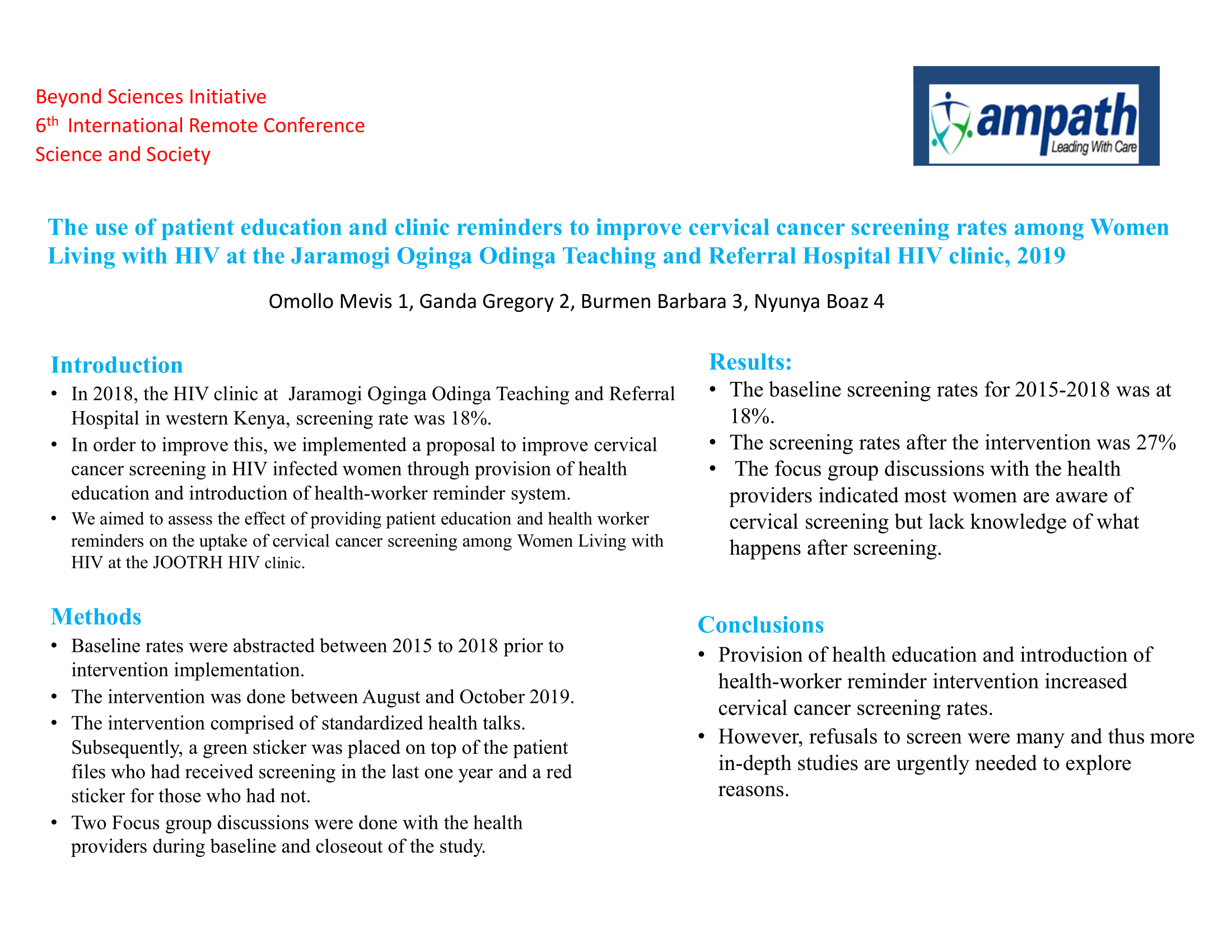Conference 2021 Poster Presentation
Project title
The use of patient education and clinic reminders to improve cervical cancer screening rates among Women Living with HIV at the JOOTRH HIV clinic 2019
Authors and Affiliations
Omollo Mevis1, Ganda Gregory2, Barbara Burmen3, Boaz Nyunya4
1. Kenya Medical Research Institute/Centre for Global Health Research, Kisumu, Kenya.
2. Jaramogi Oginga Odinga Teaching and Referral Hospital, Kisumu , Kenya
3. CIPHER
4. Kisumu County Department of Health Kisumu Kenya
Abstract
Background
In 2018, the HIV clinic at the Jaramogi Oginga Odinga Teaching and referral hospital (JOOTRH) in western Kenya, screening rate was 18%. In order to improve this, we implemented a proposal to improve cervical cancer screening in HIV infected women through provision of health education and introduction of health-worker reminder system.
Objective: To assess the effect of providing patient education and health worker reminders on the uptake of cervical cancer screening among Women Living with HIV at the JOOTRH HIV clinic.
Methods
Baseline rates were abstracted between 2015 to 2018 prior to intervention implementation. The intervention was done between August and October 2019. The intervention comprised of standardized health talks. Subsequently, a green sticker was placed on top of the patient files who had received screening in the last one year and a red sticker for those who had not. Data was abstracted into CommCare. Two Focus group discussions were done with the health providers during baseline and closeout of the study.
Results
The baseline screening rates for 2015-2018 was at 18%. In the intervention phase, a total of 1200 women visited the clinic of whom 18% (208) had been screened for CaCx in the year preceding the clinic date. Of those not screened (n=992), 34% (334) consented to screening using VIA/VILLI (99%; n=329) and Pap smear (1%; n=5) with positive results among 5% (19) of those screened using VIA/VILLA and the results for Pap smear were not indicated. WLHIV who declined screening (n=658) did not disclose the reason for their choices (75%; 492), reported that the procedure was unpleasant (10%; n=65), or reported having other commitments or to travel a long distance to get to the clinic (6%; n=43), or that they were not sexually active (5%; n=35), asked for a rescheduled screening visit (2%; n=16) or reported being on their menses (1%,;n=7). The focus group discussions indicated existing gaps in cervical cancer screening.
Conclusions
Provision of health education and introduction of health-worker reminder intervention increased cervical cancer screening rates. However, refusals to screen were many and thus more in-depth studies are urgently needed to explore reasons.

